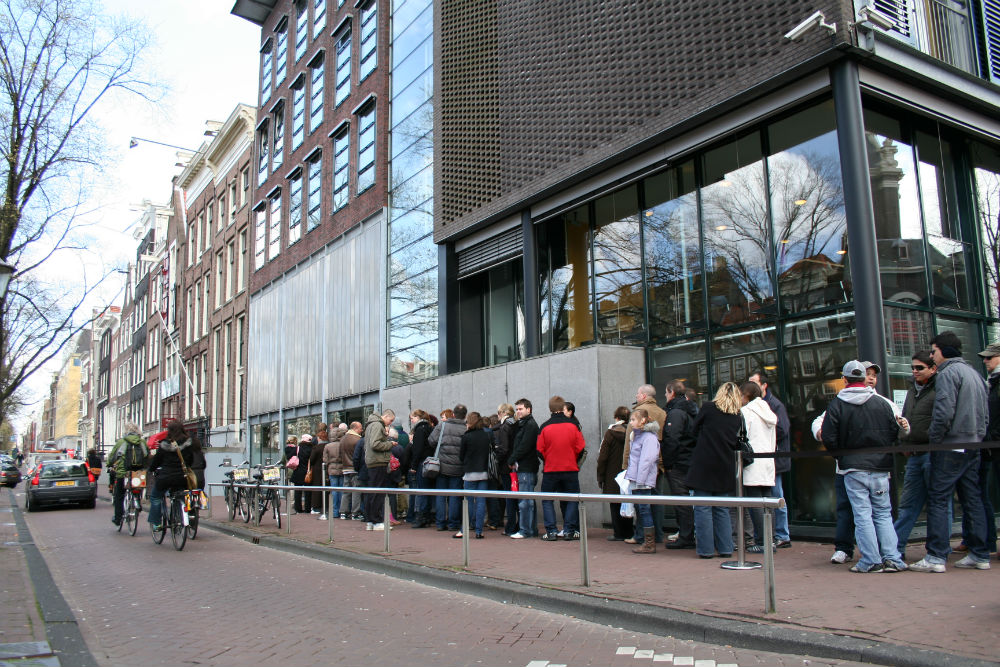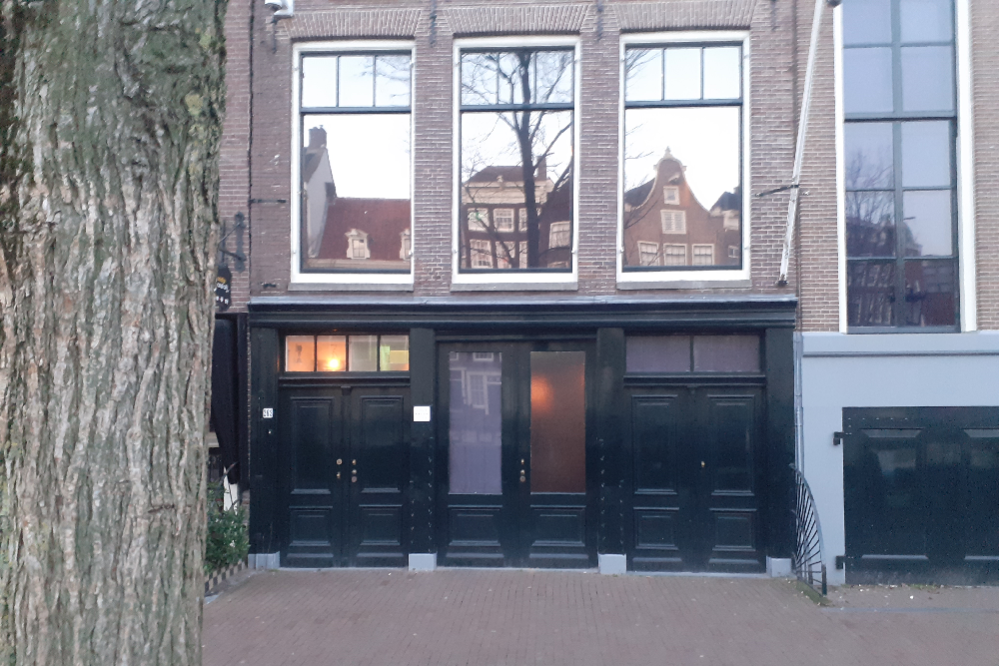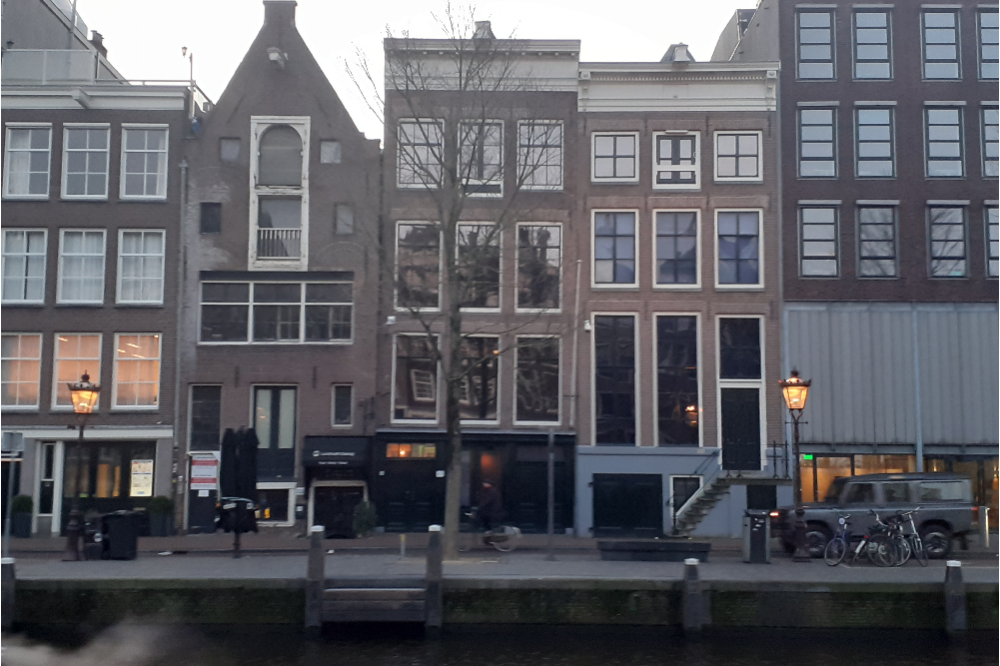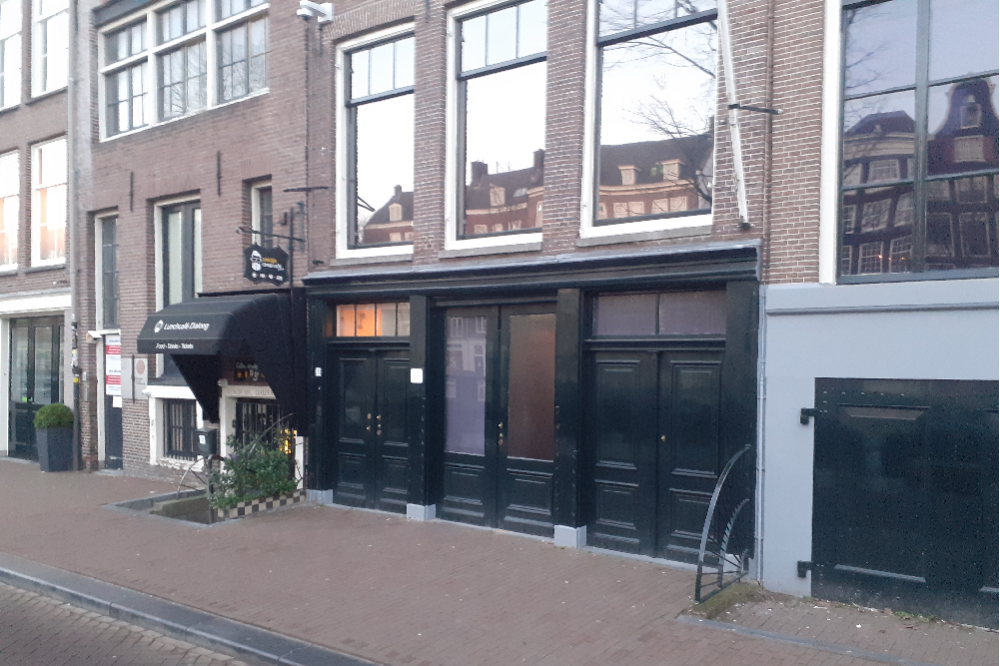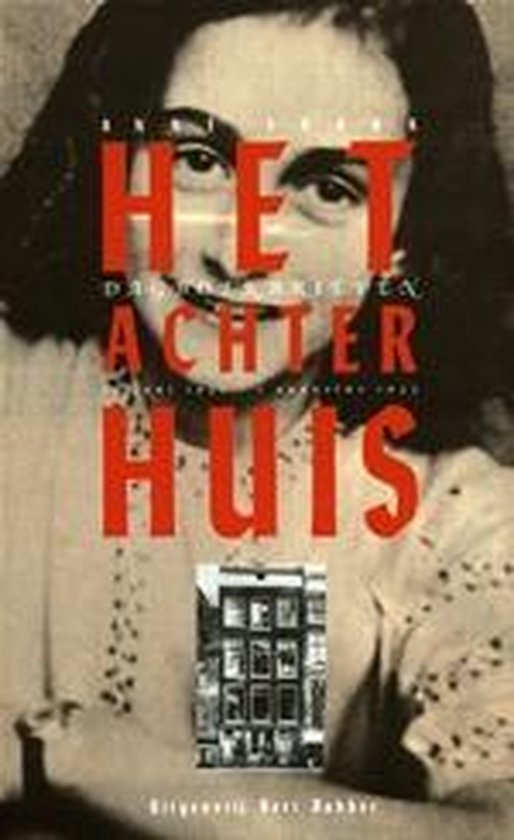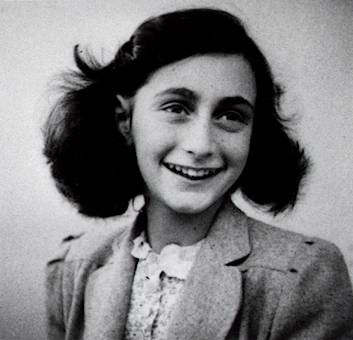Anne Frank House Amsterdam
The former hiding place, where Anne Frank wrote her diary, is now a well-known museum. The museum tells the history of the eight people in hiding and those who helped them during the war. Anne Frank's diary is among the original objects on display.
Opekta
More than six months after the German invasion, Otto Frank moves the Opekta and Pectacon office and storerooms from the building at #400 Singel to #263 Prinsengracht.
The ground floor storeroom consists of three parts. Right at the front is the dispatch of goods area. In the middle part are the machines for grinding and mixing spices. In the back, the spices are packaged. In two mixing drums, jellying agents for the preparation of jam are made. The Opekta product is only sold during and after the summer, when there is a lot of fruit, with which to make jam. Pectacon is a herb mix for the preparation of sausage.
The hiding place
Monday morning, the Frank family goes into hiding in the secret annex of the office building. Previously, one of the upper floors was used as a laboratory for a short while.
During the months before going into hiding, this was prepared as inconspicuously as possible with the attic space and two floors cleared and made habitable.
In the block of houses located on the garden side behind the Prinsengracht during the war, the secret annex of #263 is one of a long row of small and large buildings, where some houses are deeper than others. The neighbors to the side and rear were given the impression that the house in not in use.
One week later, on July 13, the Van Pels family go into hiding at the Secret Annex. Fritz Pfeffer follows on November 16. The period in hiding ends on August 4th 1944, when the people there have been betrayed and are arrested.
The building after the war
Otto Frank returns to Amsterdam as the family's sole survivor and moves in with Jan and Miep Gies for several years.
The Opekta company was still active and staff still worked there, with Johannes Kleiman as director.
Otto finally withdraws from the company in 1953 and devotes more and more of his time to his daughter Anne's diary.
Together with Kleiman he devotes himself to the preservation of the building. The adjacent buildings, however, are designated for demolition and form a direct threat to #263. Furthermore, the building is in bad condition. Opekta can no longer afford to keep building and moves.
Under pressure from public opinion and thanks to a collection initiated by the mayor Van Hall of Amsterdam , the building is saved.
The house as museum
At the opening, Otto Frank writes: 'During the restoration of the house, it was the intention to modernize the front part of the building, to be able to use it as an international youth center, but to leave the secret annex in its original condition as much as possible.'
Kleiman was involved in the Anne Frank House as member of the Board until his death in 1959, he was also a director of Opekta.
Miep Gies and Bep Voskuijl had stopped working in 1947 to take care of their families. Victor Kugler emigrated to Canada in 1955.
This place, where they all left an important history, attracts a lot of attention from 1960. In the first year, no less than 9,000 people visit the museum. Ten years later there were 180,000 visitors. The house closed for several months in 1970 for necessary maintenance work because so many visitors caused problems to the fabric of the building.
For current visiting hours, please visit the website of the museum.
Do you have more information about this location? Inform us!
Source
- Text: Anne Frank Stichting
- Photos: Massimo Catarinella (1), Cheapskatetravel.nl (2, 3, 4)
Related books
Nearby
Museum
- NIOD Institute for War, Holocaust and Genocide Studies - Amsterdam
- Jewish Museum - Amsterdam
- Rijksmuseum Amsterdam - Amsterdam
Point of interest
- Regional Quarter Nationale Jeugdstorm - Amsterdam
- Paper Trading Company Singel 230-236 - Amsterdam
- Illegal Printer Nieuwezijds Voorburgwal 160 - Amsterdam
Monument
- Memorial Anne Frank Westermarkt Amsterdam - Amsterdam
- Gay Memorial Amsterdam - Amsterdam
- Memorial Niek Engelschman Amsterdam - Amsterdam
Cemetery
- De Nieuwe Kerk - Amsterdam
- Dutch War Graves Cemetery Vredenhof Amsterdam - Amsterdam
- Dutch War Graves Roman Catholic Cemetery St. Barbara Amsterdam - Amsterdam
Remembrance Stone
- Stumbling Stones Herengracht 144 - Amsterdam
- Stumbling Stones Rozengracht 67 - Amsterdam
- Stumbling Stone Hartenstraat 26 - Amsterdam
